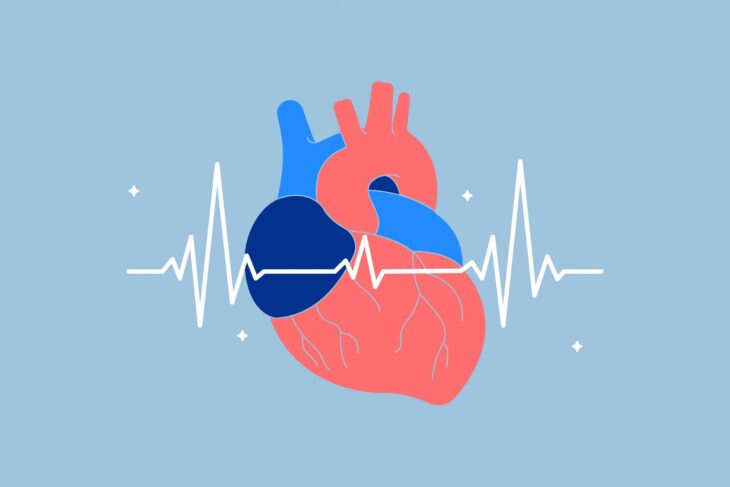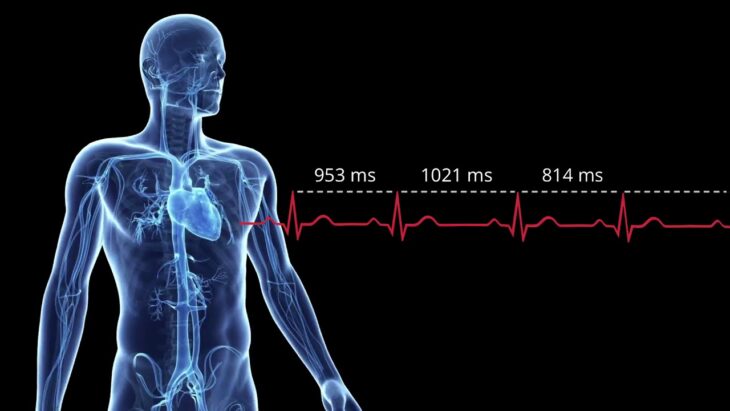Nowadays many people are getting more and more aware about their health and physique and have started making an active effort to improve it. This is for good reason too – with the pandemic still prevalent because of the Covid-19 virus that weakens the immune system, it has become crucial for people to improve their health and make their body fit.
One important aspect of this fitness is HRV. Many people in the world of fitness and health have started using the word more and more often in daily conversations and even on internet articles and websites. You yourself might have seen it being mentioned a couple of times and might be wondering what HRV means and why it matters.
According to Welltory.com, one of the internet’s leading heart tracking and HRV monitoring apps which you can also find on appstore, it is imperative that you understand what HRV is and how tracking it can significantly improve your life. HRV is still a confusing concept for many people out there and if you too are someone who has gotten confused over it then don’t worry because we have you covered.
In this article, we will be talking about what HRV means, what it can tell us about our body and why knowing about it is important for you. We strongly recommend that you read the article till the end so that you don’t miss out on any crucial details.
Contents
What does HRV exactly mean?

Source: Amerisleep.com
HRV (Heart Rate Variability) simply stands for the time interval variance rate between each of your heartbeat. This is not to be confused with HPM or HPS, which stands for heartbeat per minute and heartbeat per second respectively. This is because the heart doesn’t follow a set time between its heartbeats and they have various variations between them.
For example, you can have two heartbeats with a time interval of 0.7 second in one instance and two heartbeats with a time interval of 1.2 seconds in another instance. This time interval variance is calculated and measured by HRV. Consequently, if the time interval between your heartbeats has a high average, your variability rate would also be high. In case it is low, your variability rate would also be low.
Nervous system and HRV

Source: elitehrv.com
You might also be surprised to know that HRV is not directly derived from your heart’s functions or your heart rate. Instead, it is derived from your nervous system – your autonomic nervous system to be more precise. This type of nervous system is in control of the involuntary functions of your body that occur without your control or will. These functions are further divided into two parts – parasympathetic and sympathetic.
The parasympathetic and sympathetic nervous systems are completely different from each other. The prior is often activated when your heart rate slows down and is the preferred type of nervous system for activities that concern resting and digestion, such as sleeping during night. This branch is known for increasing your variability rate to ensure that your homeostasis state gets restored in the aftermath of stressful activities.
On the other hand, the sympathetic nervous system gets activated during an emergency, stressful or straining events such as exercising, facing severe amounts of stress or during an accident. This branch of the nervous system is responsible for increasing your heart rate and blood pressure to activate as many organs as possible.
The sympathetic nervous system is entirely responsible for creating an increased amount of stress hormone production and increasing the contraction rate of the heart. This inadvertently forces the HRV to drop. These two nervous systems balance each other out in a healthy and normal life but in case one branch dominates the other, it is considered an unhealthy lifestyle.
What can HRV tell us about our body?

Source: metrifit.com
In most normal situations where an individual leads a healthy life, the normal heart rate variability they should have should be high at most times. This implies that the individual is focusing on relaxing activities. Conversely, an unhealthy life would be that one where the variability rate is naturally low to cope up with the body’s increasing demand.
While having low HRV during exercise and physical activities is completely fine, if you have a low variability rate all the time then that means that you are leading a stressful life and need to make immediate changes.
Problem is that this variability rate is rather hard to track and it changes from time to time. This leaves many people wondering what is a good HRV and how to improve HRV without any significant problem. That’s why individuals go through dedicated heart rate variability training and keep a track of their variability rate with dedicated trackers.
Doing this leads them to tracking their variability rate accurately. In case the natural balance between your body’s variability rates gets destroyed because of a series of events, it can indirectly cause you to stress up and feel overloaded.
Why is knowing about HRV important?

Source: quickanddirtytips.com
In today’s date, knowing about variability rate has become extremely important. If you can track your variability rate on a daily basis, you get to understand what lifestyle you are living and what you can do to improve it.
The data obtained from an HRV tracker can transform into feedback for your own body that ultimately helps you perform better in life, opt for the perfect training and drastically improve your general well-being and wealth.
Once you have a better grasp of your variability rate, you can get much better insights into your nutrition intake, your sleep patterns, your stress levels, your mental health, symptoms for illnesses and any visible risks of diseases. In the end, tracking your HRV only helps you improve your health significantly.
Conclusion
HRV is an extremely common term in health and fitness circles and it is imperative that you understand what it is and how it can affect you. If this article was helpful for you in doing that, please consider following our website for regular updates as it will help us out immensely.
